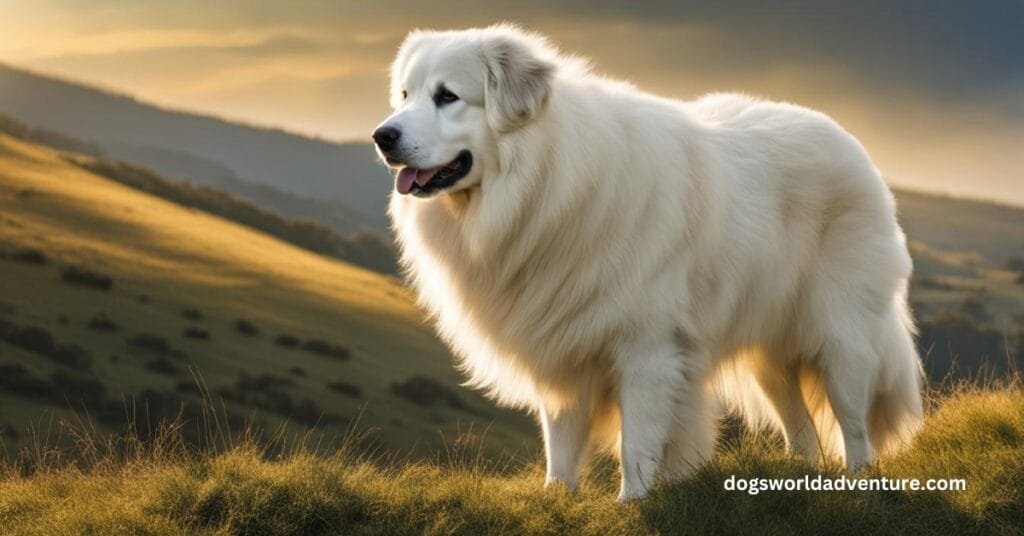The Great Pyrenees is a large, gentle dog known for its calm nature and protective instincts. Originally bred to guard sheep in the mountains, these dogs are loyal, loving, and make excellent family pets. With their thick, fluffy white coat and strong build, they are both beautiful and powerful. Great Pyrenees are often called “gentle giants” because of their kind nature, especially around children. However, their independent personality and large size mean they need special care, like regular grooming and space to roam.
Owning a Great Pyrenees comes with some challenges, such as heavy shedding, a need for moderate exercise, and training for their independent nature. They are great with families and other pets if properly socialized. Caring for them includes a good diet, regular grooming, and giving them plenty of space and love. Whether you adopt one from a rescue or buy from a breeder, the Great Pyrenees can be a wonderful companion and protector for your home.
Statistics
- Origin: France and Spain (Pyrenees Mountains)
- First Use: Livestock guardian dog
- AKC Recognition: 1933
- Common Nicknames: Pyrenean Mountain Dog, Pyr
- Purpose: Guarding sheep, family companion, guard dog
- Group: Working Group
- Height: 27-32 inches (male), 25-29 inches (female)
- Weight: 85-160 pounds
- Life Expectancy: 10-12 years
- Energy Level: Moderate
- Coat: Thick double coat, weather-resistant
- Temperament: Gentle, protective, calm, and independent
- Shedding: High
- Good with Kids: Yes
- Good with Other Pets: Yes, with proper socialization
Great Pyrenees Overview
The Great Pyrenees, also known as the Pyrenean Mountain Dog, is a giant, majestic breed with a long history of working as a livestock guardian. Originally bred in the Pyrenees Mountains of France and Spain, these dogs were trusted with protecting flocks of sheep from predators such as wolves and bears. Known for their calm demeanor and protective nature, the Great Pyrenees has become a popular family pet, thanks to its gentle and loving temperament. They are famous for their thick, weatherproof coats, large size, and quiet intelligence. However, they do have an independent streak, making them unique in training and daily care.

Great Pyrenees Highlights
- Gentle Giants: Despite their large size, Great Pyrenees are known for their calm and gentle nature, especially around children.
- Protective Nature: These dogs are natural guardians, and their instincts make them excellent protectors for families, homes, and livestock.
- Stubborn Independence: Their independent thinking can sometimes make training a bit of a challenge, but with patience, they can become well-behaved companions.
- Shedding: Great Pyrenees shed heavily, especially during the change of seasons. Regular grooming is a must for this breed.
- Low Energy: Even though they are big dogs, Great Pyrenees don’t require intense exercise. Daily walks and moderate activity are usually enough to keep them content.
- Good with Kids and Other Pets: With proper socialization, they are known to be wonderful with children and other animals, making them great family dogs.
Great Pyrenees History
The history of the Great Pyrenees dates back over a thousand years to the Pyrenees Mountains, which stretch between France and Spain. The breed was developed primarily to guard livestock, particularly sheep, from wolves, bears, and other predators. They were bred to be strong, independent, and capable of thinking for themselves when protecting their flock. These dogs worked side by side with shepherds, often spending days or weeks on their own, patrolling mountain ranges and keeping the herd safe.
The Great Pyrenees became especially popular among French nobility in the 17th century, where they were prized not only for their guarding abilities but also for their regal appearance. By the late 19th and early 20th centuries, they began to spread internationally, particularly in the United States, where they gained recognition by the American Kennel Club in 1933.
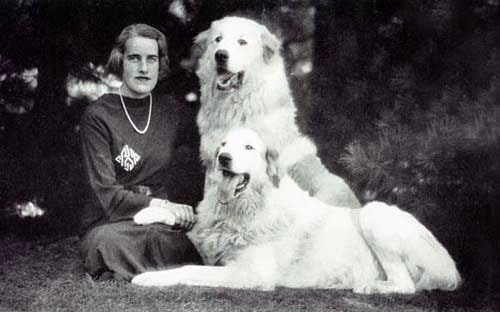
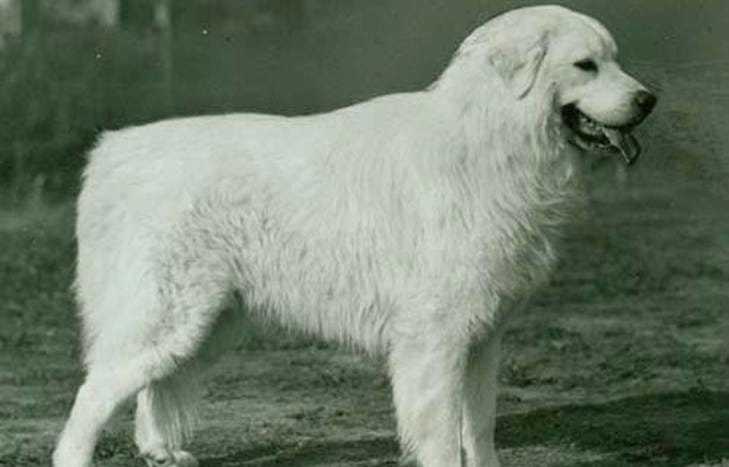
Great Pyrenees Size
The Great Pyrenees is a giant breed, with males standing 27 to 32 inches tall at the shoulder and females ranging from 25 to 29 inches. In terms of weight, males typically weigh between 100 and 160 pounds, while females usually weigh between 85 and 115 pounds. Due to their large size, Great Pyrenees need ample space to move around, and they’re not ideally suited for apartment living unless you have sufficient outdoor access and space.
Breed Colors & Markings
The Great Pyrenees is famous for its striking white coat. The majority of the breed is pure white, but you may also see some dogs with patches of gray, tan, or pale yellow, particularly around the face, ears, and tail. These markings are perfectly acceptable within the breed standard. Their double coat consists of a thick, weatherproof undercoat and a long, coarse topcoat. This combination keeps them warm in cold weather and protects them from the elements, particularly when guarding livestock in mountainous regions.
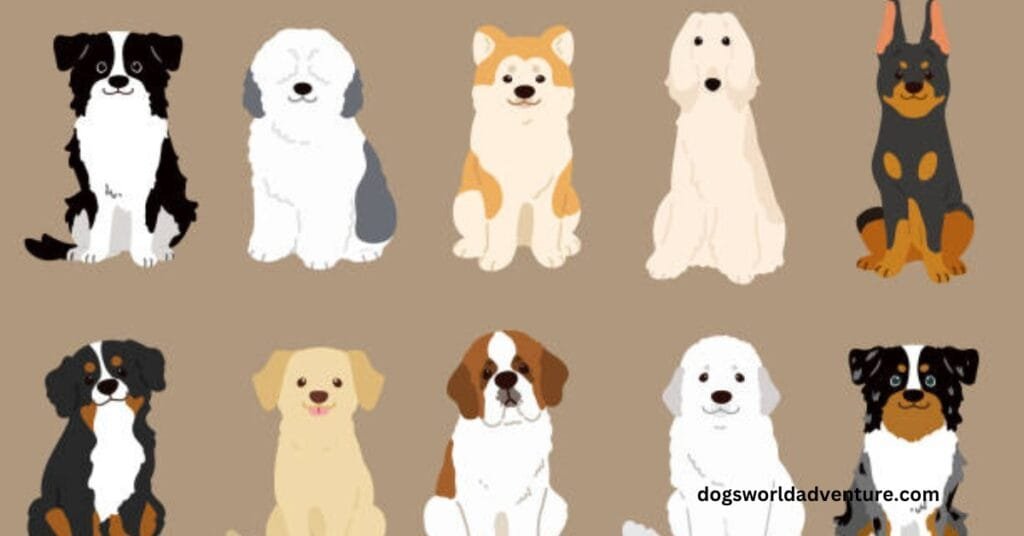
Great Pyrenees Personality
The Great Pyrenees is often described as calm, patient, and independent. These dogs are confident and composed, knowing their strength and abilities. They are also known for their unwavering loyalty and protective instincts, making them excellent guardians. However, they are not aggressive by nature; instead, they are more likely to use their size and presence to ward off threats.
Though these dogs are protectors, they are incredibly gentle with their families. They have a natural affinity for children, often taking on a nurturing, watchful role. However, they can be somewhat aloof with strangers, showing cautious behavior until they feel the person or situation is safe.
The Breed Standard
The breed standard for the Great Pyrenees is outlined by the American Kennel Club (AKC) and focuses on a variety of aspects including size, structure, temperament, and coat. According to the AKC, the Great Pyrenees should be balanced, with a strong and muscular build that reflects its working heritage. The head should be proportional to the body, with a calm and alert expression. The ears are small to medium in size and lie flat against the head.
Their coat should be weather-resistant, consisting of both a dense undercoat and a longer outer coat. The most common color is white, though patches of gray, tan, or yellow are permissible.
Breed Traits & Characteristics
- Intelligence: Great Pyrenees are smart, but they are independent thinkers. This means they can be a bit stubborn and may not always listen to commands right away.
- Loyalty: They form deep bonds with their families and are very protective, especially when they sense danger.
- Patience: They are incredibly patient, making them great with children and other animals.
- Independence: Great Pyrenees can be self-reliant, sometimes preferring to do their own thing. This trait stems from their history as livestock guardians, where they had to make decisions on their own.
- Calm Nature: While protective, these dogs are calm and gentle most of the time, particularly when inside the home.
- Barking: They are known to bark, especially when they perceive a threat. This can make them excellent guard dogs, but it’s important to train them to avoid excessive barking.
Great Pyrenees Health
The Great Pyrenees is generally a healthy breed, but like all breeds, they are prone to certain health conditions. If you’re considering a Great Pyrenees, it’s essential to be aware of the following potential health issues:
- Hip Dysplasia: This is a genetic condition where the hip joint doesn’t fit properly into the hip socket, causing pain and potentially leading to arthritis.
- Elbow Dysplasia: Similar to hip dysplasia, this condition affects the elbows and can cause lameness and arthritis.
- Bloat (Gastric Dilatation-Volvulus): This is a life-threatening condition where the stomach fills with gas and can twist. It requires immediate veterinary attention.
- Entropion: This is a condition where the eyelid rolls inward, causing irritation to the eye. Surgery may be required to correct this.
- Luxating Patella: This condition occurs when the kneecap dislocates or moves out of its normal position.
- Osteosarcoma: A type of bone cancer that is more common in large dog breeds.
- Obesity: Given their size, Great Pyrenees can be prone to obesity, which can lead to other health issues like joint problems and heart disease. Proper diet and regular exercise are key.
To ensure a healthy life for your Great Pyrenees, it’s important to schedule regular vet checkups, feed them a well-balanced diet, and monitor their weight.
Great Pyrenees Care
Caring for a Great Pyrenees requires attention to their grooming, exercise, diet, and health needs. Here’s what you should expect:
- Grooming: The Great Pyrenees has a thick double coat that requires regular brushing to prevent mats and tangles. During shedding seasons, which occur twice a year, daily brushing may be necessary. Bathing is only required when necessary, as frequent baths can strip the natural oils from their skin and coat.
- Exercise: While they don’t need intense exercise, daily walks and moderate activity are important for keeping your dog healthy. A large yard where they can roam is ideal, but they can adjust to smaller spaces as long as they get regular outdoor time.
- Diet: Feed your Great Pyrenees a high-quality dog food that meets their specific needs. Avoid overfeeding, as this breed is prone to weight gain.
- Training: Begin training and socialization early. Their independent nature can make training a bit of a challenge, so patience and consistency are key.
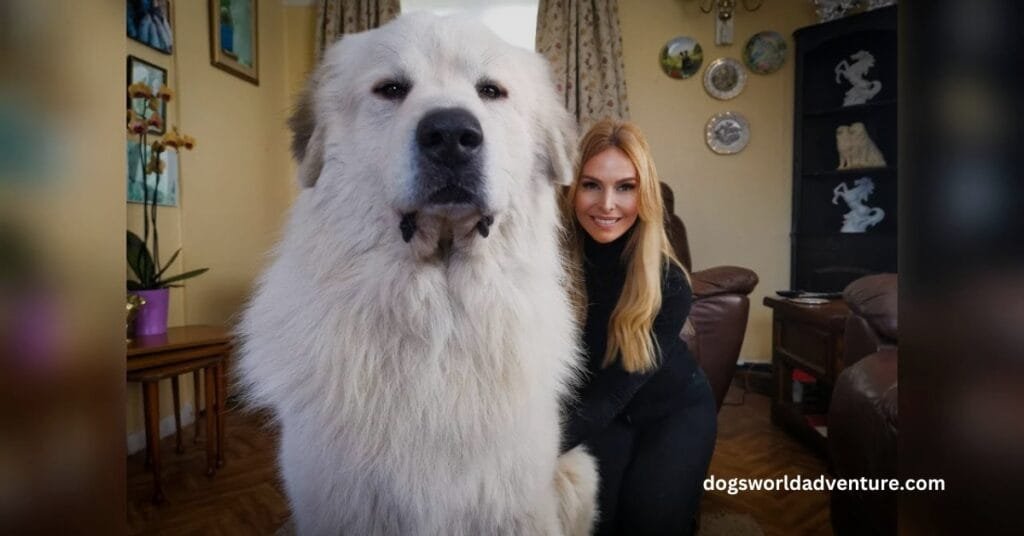
Great Pyrenees Feeding
The Great Pyrenees is a large dog, which means they have specific dietary needs to keep them healthy and strong. Here are some tips for feeding your dog:
- Food Amount: On average, a Great Pyrenees will need 4-6 cups of high-quality dry food each day, divided into two meals. The exact amount will depend on their age, weight, and activity level.
- Type of Food: Look for a dog food that contains high-quality proteins and balanced nutrients. Avoid dog foods with too many fillers like corn or soy.
- Treats: Use treats in moderation, as Great Pyrenees are prone to weight gain. Opt for healthy, low-calorie treats, and be sure to account for treats in their daily calorie intake.
- Water: Always provide fresh, clean water for your Great Pyrenees. These dogs are large and can drink a lot, so be sure their water bowl is always full.
Great Pyrenees Coat Color and Grooming
The Great Pyrenees has a dense, weather-resistant coat designed to protect them from harsh elements. They require regular grooming to keep their coat healthy and clean. Here’s what to expect when grooming your Great Pyrenees:
- Brushing: Regular brushing is a must to prevent mats and tangles. Aim to brush your dog at least 2-3 times per week, though more frequent brushing may be necessary during shedding seasons.
- Shedding: Great Pyrenees shed heavily, especially during the spring and fall. Regular grooming during these times will help manage shedding.
- Bathing: Bathe your dog only when necessary. Overbathing can strip their coat of natural oils, leading to dry skin and other issues.
- Trimming: Trim the fur around their paws and ears as needed to prevent mats and dirt buildup. Additionally, keep their nails trimmed to prevent discomfort or injury.
Great Pyrenees Children and Other Pets
Great Pyrenees are known for being patient and gentle with children, making them excellent family pets. They are often referred to as “gentle giants” because of their calm and nurturing nature. However, their large size means they should always be supervised around very small children to prevent accidental knocking over.
As for other pets, Great Pyrenees tend to do well with other dogs and animals, particularly if they are raised together. Their history as livestock guardians means they have an innate ability to get along with other animals. Early socialization is key to ensuring a harmonious relationship between your Great Pyrenees and other pets.
What to Expect When Caring for a Great Pyrenees
Caring for a Great Pyrenees can be a rewarding experience, but it also comes with its challenges. Here’s what you can expect:
- Space: Due to their size, Great Pyrenees need plenty of room to move around. A large yard is ideal, but they can adapt to smaller living spaces as long as they get regular outdoor time.
- Time: These dogs require regular grooming, moderate exercise, and attention. Be prepared to invest time in training, socialization, and daily care.
- Behavior: While they are protective, they are generally calm and easy-going in the home. However, their independent nature means they may not always listen to commands right away.
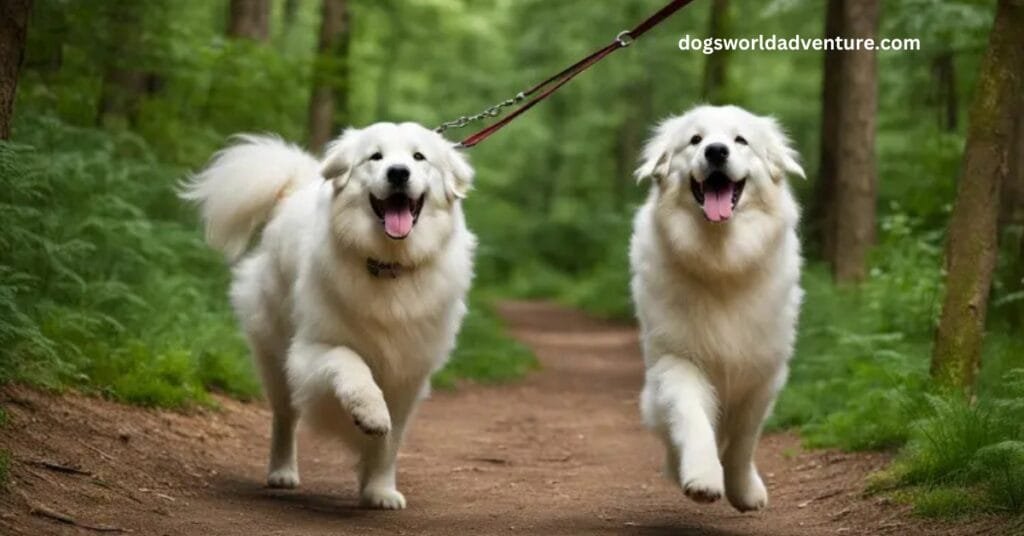
Great Pyrenees Rescue Groups
If you’re considering adopting a Great Pyrenees, there are many rescue groups dedicated to finding homes for these gentle giants. Some well-known organizations include:
- Great Pyrenees Rescue Society
- National Great Pyrenees Rescue
- Big Fluffy Dog Rescue
Rescue groups often have dogs of all ages, including puppies and seniors, that are looking for forever homes. Adopting from a rescue is a great way to provide a loving home for a dog in need.
Great Pyrenees Breed Organizations
There are several organizations dedicated to the promotion, care, and breeding of Great Pyrenees. Some of these include:
- The American Kennel Club (AKC): Provides information on the breed standard, events, and competitions.
- The Great Pyrenees Club of America (GPCA): Dedicated to the preservation and protection of the breed.
- Pyrenean Mountain Dog Club: Focuses on promoting responsible breeding and care of the Great Pyrenees.
These organizations provide valuable resources for owners, breeders, and anyone interested in learning more about the breed.
Conclusion
The Great Pyrenees is a majestic and gentle breed with a long history as a protector. Whether guarding livestock or serving as a family companion, their calm, loyal, and patient nature makes them a beloved pet. While their size and independent personality may present some challenges, the rewards of owning a Great Pyrenees are immeasurable. With proper care, grooming, and training, these gentle giants can become an integral part of your family, providing protection, love, and companionship for years to come.
FAQs
1. Are Great Pyrenees good family dogs?
Yes! They are very gentle and protective, making them great family dogs, especially for homes with kids.
2. Do Great Pyrenees bark a lot?
Yes, they tend to bark to alert you if they see something unusual. This is part of their protective nature.
3. How much exercise does a Great Pyrenees need?
They don’t need a lot of exercise, but a daily walk of 30 minutes will keep them healthy and happy.
4. Do Great Pyrenees shed a lot?
Yes, they have thick coats and shed regularly, especially during seasonal changes.
5. Can I keep a Great Pyrenees in an apartment?
It’s not ideal since they need space to roam. A home with a large yard is better suited for them.
6. How long do Great Pyrenees live?
The average lifespan of a Great Pyrenees is 10 to 12 years.
7. Do Great Pyrenees get along with other pets?
Yes, they can get along with other pets, but early socialization is key.
8. How often should I groom my Great Pyrenees?
You should brush them at least twice a week to keep their coat clean and free of tangles.
9. Are Great Pyrenees hard to train?
They can be a bit stubborn, but with patience and positive reinforcement, they can be trained.
10. Are Great Pyrenees good guard dogs?
Yes, they are natural protectors and will guard your family and home without being overly aggressive.

